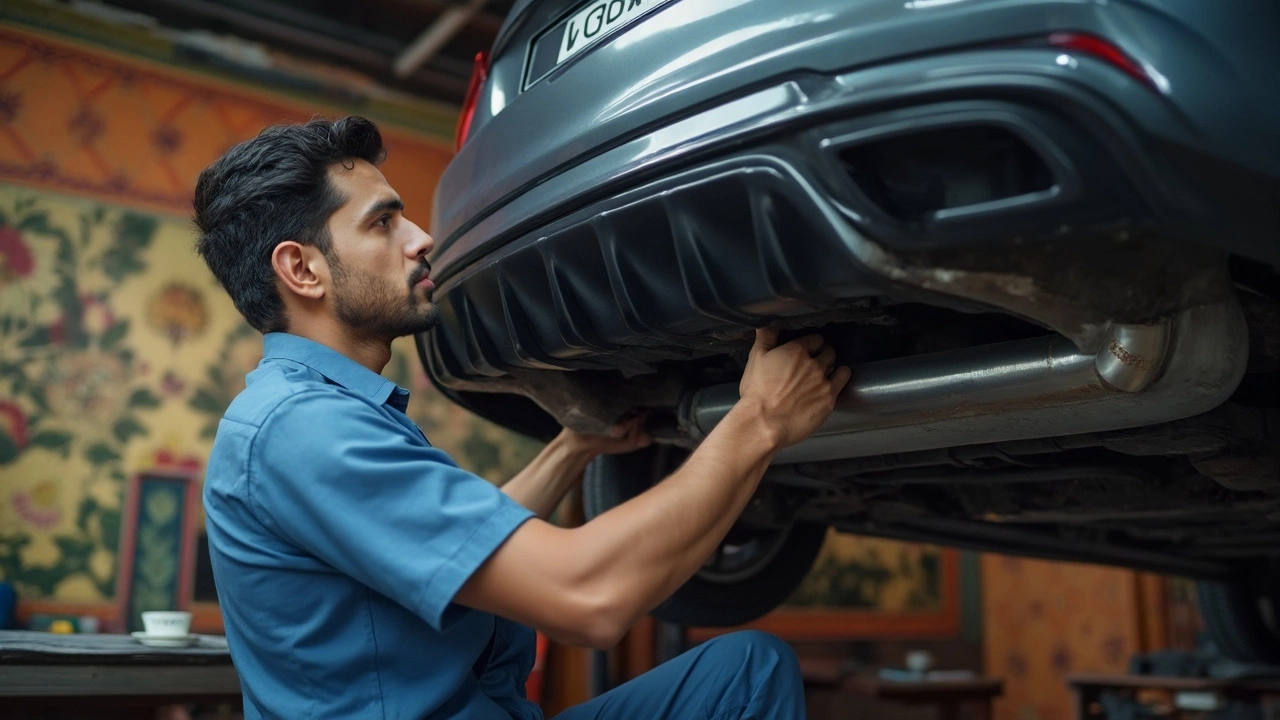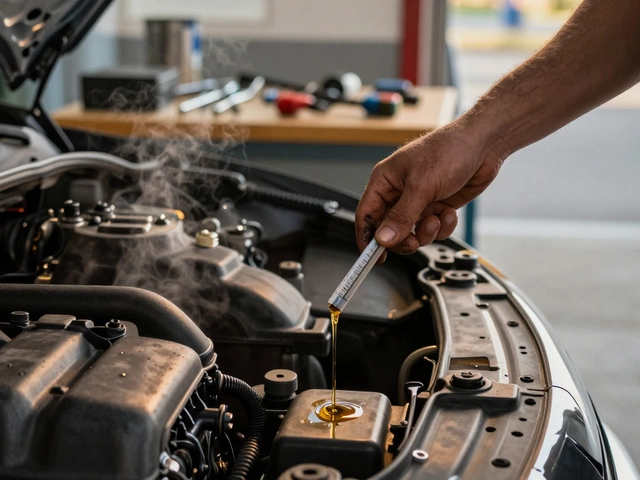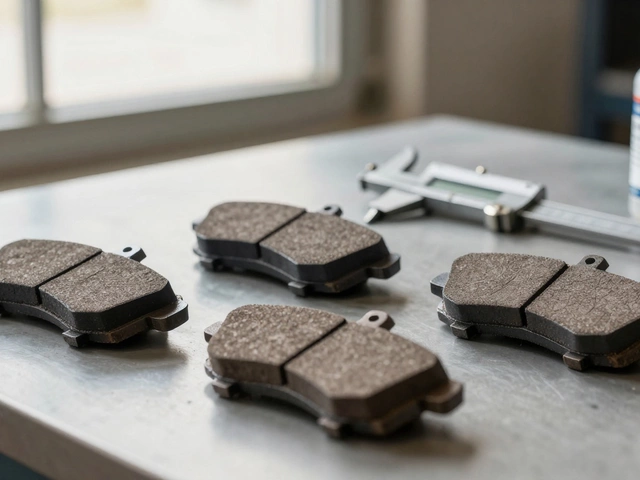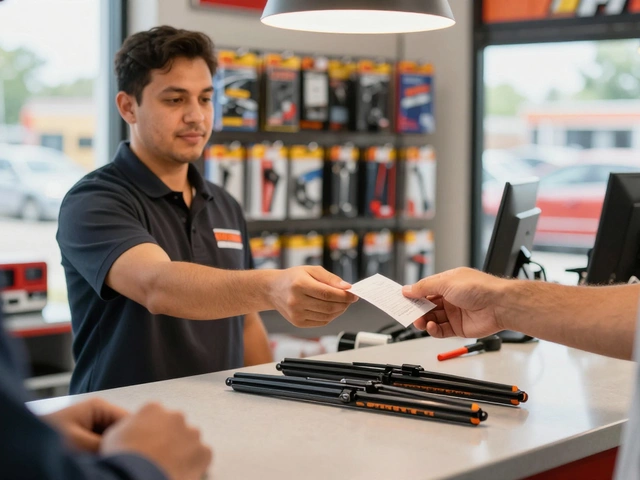Heads up—upgrading your exhaust system isn't just about making your car louder, but that's definitely a bonus for most folks. The exhaust does a lot more than you think: it helps your engine 'breathe,' affects your fuel efficiency, and can even change the way your car looks from behind. Sounds like a big deal, right?
Before you even think about brands or price tags, know this: the "best" exhaust isn't universal. What's awesome for your buddy's Mustang might be a headache for your Toyota Corolla. You want something that fits your driving style and your local laws—nobody likes a ticket for an illegal mod.
If you want real gains (like quicker acceleration or a throatier growl), you have to look past the pretty tips and focus on what’s inside: pipe diameter, material, mufflers, and even the shape of bends. Stainless steel holds up better if you’re in a snowy area with salt on the roads, while mild steel is lighter on the wallet but won’t last as long.
- Exhaust System Basics: What Does It Really Do?
- Types of Exhaust Systems and Which Fits Your Car
- Performance vs Sound: What Matters Most?
- Aftermarket Brands People Actually Trust
- Tips for Picking (and Installing) the Best Exhaust
Exhaust System Basics: What Does It Really Do?
Let’s break the exhaust system down to what actually matters. Its main job is to take all those nasty gases from your engine and safely send them out the back, away from you and your passengers. If you’re picturing a fancy pipe just blowing smoke, you’re missing a lot.
So what’s under the car? Here’s the usual lineup:
- Exhaust manifold or headers: This is where it starts, right at the engine. The manifold grabs gases from each cylinder, then pushes them into one pipe. Upgrading this can give you a small bump in horsepower.
- Catalytic converter: This little box is the reason your car isn’t a mobile pollution factory. It turns bad stuff—like carbon monoxide—into less harmful stuff before it leaves your car. Strict emissions rules make this a must-have.
- Muffler: Most folks know this part. It cuts down the noise so your neighbors aren’t plotting revenge at 6 a.m. when you start your car. Some performance mufflers actually boost power a bit by helping gases flow out quicker.
- Resonator: Not all cars have one, but they help take the edge off weird sounds the engine makes, leaving a more polished exhaust note.
- Piping: All these parts connect with metal pipes. The size and shape matter—a bigger pipe can flow more air, but too big and you might lose torque on daily drives.
If you’re curious how these parts stack up, here’s a quick table with their main jobs:
| Component | Main Function |
|---|---|
| Manifold/Headers | Collect gases, start flow |
| Catalytic Converter | Clean up emissions |
| Muffler | Reduce sound |
| Resonator | Fine-tune sound |
| Piping | Move gases to exit |
A good exhaust system does more than cut noise—it keeps your car legal, helps it run better, and can even squeeze out more horsepower. The trick is balancing all those benefits with what you actually want from your ride. If you’re aiming for better performance or that deep-throated sound, knowing the basics gives you the right starting point.
Types of Exhaust Systems and Which Fits Your Car
This is where a lot of folks get tripped up. There are a few main types of exhaust systems out there, and picking the wrong one can mean wasting time and cash. Let’s break down the basics:
- Axle-back systems: Swap out just the parts behind the rear axle. You get a sportier sound and a little weight loss, no big changes to performance. These are simple to install and great if you just want a nicer note without breaking the bank.
- Cat-back systems: These go from the catalytic converter to the back of your car. You boost sound, might snag a few extra horsepower, and usually keep everything street legal. Cat-backs are a solid middle ground—popular on daily drivers and weekend toys.
- Header-back systems: Out with almost everything—from the headers all the way back. You’ll see real performance gains, but the cost and install time go up fast. Usually found on serious builds, not your average commuter.
Now, how do you match these to your ride? If you drive a daily and like a quieter ride, stick with the stock or maybe a mild axle-back. Into power? Cat-back is a good upgrade—most factory exhausts are pretty restrictive. Running a turbo or chasing track times? Header-back can unlock horsepower you’d never get otherwise, but it’s overkill for stop-and-go traffic.
Watch out for local emissions laws—some states are picky about changing anything before the catalytic converter. California especially loves dishing out fines on illegal exhaust system mods. Always check what’s legal before buying anything.
Here’s a snapshot of what you’re looking at with each type:
| Type | Sound Change | Performance Gain | Cost (avg.) | Best For |
|---|---|---|---|---|
| Axle-back | Mild | Low | $300-$600 | Sound upgrade, looks |
| Cat-back | Moderate | Medium | $500-$1,200 | Performance + sound |
| Header-back | Major | High | $1,000-$2,500 | Serious builds, track |
In short: weigh your goals. Want to shake your neighbors’ windows? Axle-back or cat-back will drop that deep rumble. Chasing max power? Header-back all day, but your wallet will feel it. No matter what, double-check compatibility for your exact make and model—exhausts aren’t one-size-fits-all, even inside the same brand.

Performance vs Sound: What Matters Most?
Most people shop for a new exhaust system because they’re chasing either more noise or more power—sometimes both. But here’s the kicker: you can get one without really getting the other. So, what’s your end goal?
If you care about performance—think faster acceleration or better throttle response—you’ll want to look at exhausts designed to improve airflow. Less restriction means gases exit your engine faster. Brands like Borla, MagnaFlow, and Flowmaster actually test their systems on dynos, and some cat-back kits will give typical cars an extra 5-15 horsepower. But keep your expectations real—adding an exhaust alone won’t turn a Camry into a race car. Pair it with intake mods and a tune for the biggest gains.
If you just want your ride to sound meaner, focus on mufflers and resonators. Straight-through and glasspack mufflers give you that deep, raw tone people notice blocks away. Chambered mufflers are tamer but still let your car sing. There’s no world where a stock Civic will sound like a V8, but you can get closer. Most neighbors—and the cops—have their limits though, so watch your local noise laws.
- Performance-focused exhausts usually have bigger pipes (think 2.5" and up) and fewer restrictions.
- Sound-focused setups play with muffler types and tips—they change volume and tone way more than you’d expect.
- Some systems give you both: variable valves let you flip from quiet to loud with the push of a button.
Curious how much difference it makes? Check this comparison of popular setups on average cars:
| Setup Type | Average HP Gain | Sound Level (dB) |
|---|---|---|
| Stock Exhaust | 0 | 68-72 |
| Cat-Back Performance | +7 | 75-89 |
| Axle-Back (Sound Focused) | +2 | 80-95 |
At the end of the day, ask yourself: do you really care about numbers on a dyno, or is the extra growl every morning enough for you? The best exhaust system matches your priorities—whether that’s sneaking in a little horsepower or shaking your block when you start up.
Aftermarket Brands People Actually Trust
If you’re in the market for a performance or aftermarket exhaust system, brand matters way more than you might think. Not all brands deliver the same sound, durability, or bang for your buck. Plenty of drivers regret getting a cheap kit that rusts out or never lines up right. Here’s who really deserves your attention:
- Borla: These guys are legends for a reason. Their systems are famous for solid build quality, deep sound, and most come with a million-mile warranty. If you want your exhaust system to last longer than your car, Borla's a top pick.
- MagnaFlow: Known for strong stainless steel construction and a signature rumble that isn’t obnoxiously loud. MagnaFlow hits that sweet spot between daily-driver friendly and sporty.
- Corsa: If "drone" (that annoying vibration in the cabin) bugs you, Corsa’s patented tech is designed to eliminate it. Their systems are especially popular among truck and muscle car owners.
- Flowmaster: Loud, in-your-face, and loaded with options for nearly every vehicle. If you want to turn heads and wake the neighbors, Flowmaster’s wide lineup won’t disappoint.
- AWE Tuning: Euro car drivers swear by AWE for their precise fit and balanced tone. They don’t cut corners, especially on German rides.
Curious about price and warranty differences? Check this quick comparison:
| Brand | Average Price Range | Warranty |
|---|---|---|
| Borla | $800-$2000 | Million-mile |
| MagnaFlow | $500-$1500 | Lifetime |
| Corsa | $900-$1800 | Limited lifetime |
| Flowmaster | $300-$1200 | Limited lifetime |
| AWE Tuning | $1200-$2500 | Lifelong (original owner) |
One big tip: even the best exhaust system doesn’t fix a bad install. Stick to well-reviewed brands with strong customer support. Watch for knockoff kits sold online that claim to be "OEM quality"—real deals have serial numbers and clear branding. And pay attention to return policies; the top brands stand by their gear if you’ve got fitment issues.

Tips for Picking (and Installing) the Best Exhaust
Nobody wants to drop cash on an exhaust system that sounds terrible or rusts out before you’ve paid it off. Before you go shopping, narrow down exactly what you want—sound, performance, or both. Each choice comes with its own pros and cons, especially when it comes to your daily driving and budget.
- Fitment first. Always double-check that the exhaust system is designed for your car’s exact year and model. Even small differences can lead to leaks or extra welding. Most brands list fitment right on the box or website—don’t skip this step.
- Material matters. If you live where they salt the roads or see a lot of rain, go for stainless steel. It costs more up front, but it prevents rust and usually comes with a better warranty. Aluminized steel is fine if budget is tight, just keep an eye out for corrosion.
- Pipe diameter actually changes things. Bigger pipes move more air, which helps for more horsepower, but too big can kill low-end torque. Street cars do best with stock or a tiny bit larger. Only go big if you’ve got major mods.
- Muffler choice is where you control sound. Chambered gives a classic rumble. Straight-through style (like Magnaflow) is loud and aggressive. Pick one you (and your neighbors) can live with.
- Brand reputation isn’t just hype. Look at real reviews and check for warranty length. Some names, like Borla and Flowmaster, are popular because they back up their claims and make kits that actually fit.
- Legal stuff. Some states have strict noise or emissions rules. California’s CARB laws are no joke—you need to check if your chosen exhaust system is street legal in your area.
When it comes to installation, decide if you’re going DIY or paying a shop. Bolt-on kits are usually beginner-friendly, but expect some wrestling underneath your car. Have jack stands and basic hand tools ready. Always wait for the car to cool down—people burn themselves all the time.
- Spray rusted bolts with WD-40 beforehand for easier removal.
- Line up new gaskets with every connection—skipping this leads to leaks and annoying ticking sounds.
- Don’t overtighten the fasteners—cranking too hard can warp flanges and mess up the seal.
- If your new kit is bigger or hangs lower, check for clearance. Test drive slowly over bumps to make sure it won’t scrape.
| Material | Average Kit Price | Expected Lifespan |
|---|---|---|
| Aluminized Steel | $250 - $600 | 3-5 years |
| 409 Stainless Steel | $350 - $850 | 5-8 years |
| 304 Stainless Steel | $600 - $1500 | 8-12 years |
Last tip: hold onto your old exhaust until you know you’re happy with your new setup. Sometimes, you only realize after a few drives that the new system drones too much or doesn't fit your commute. Swapping back can be a lifesaver. Pick smart, install carefully, and your car will thank you every single drive.











Write a comment